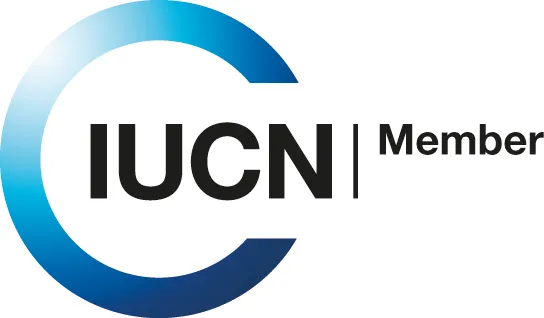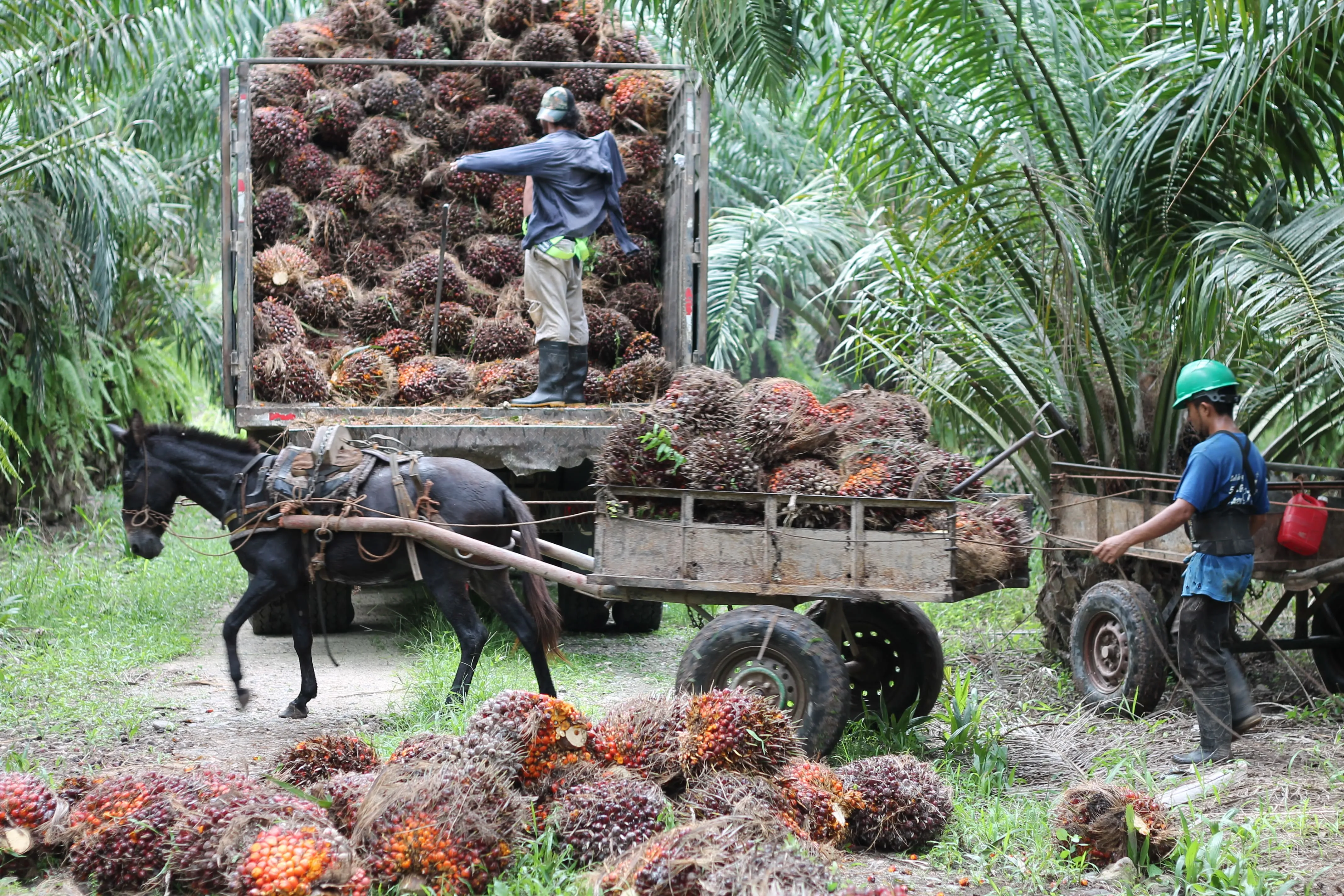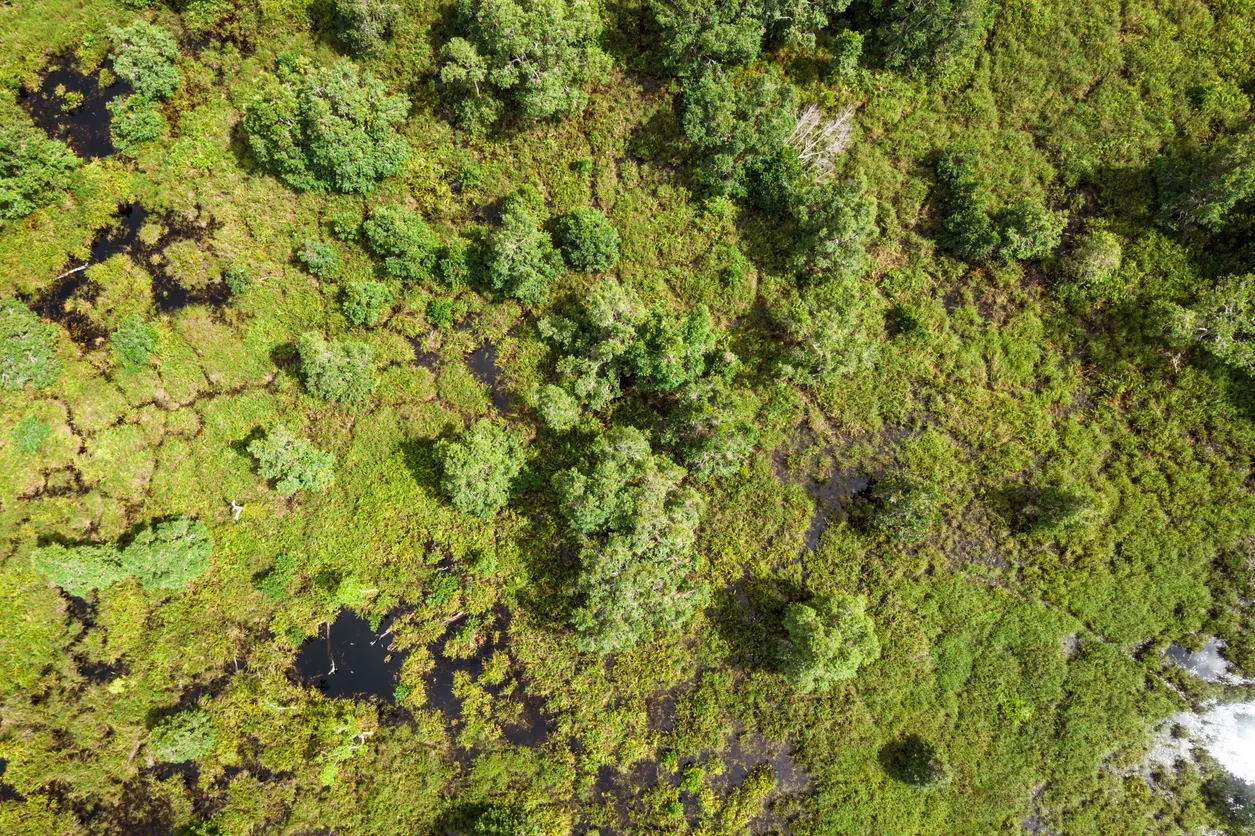
IPBES Youth Workshop: Envisioning positive futures for people and nature
Ana Sofia Lorda from the HCV Network Secretariat was selected to participate in the IPBES Youth Workshop that took place from 19-23 October, 2022 in the Isle of Vilm, Germany. In this blog she explores how the HCV Approach can help achieve transformative change.
IPBES in a nutshell
The Intergovernmental Science-Policy Platform on Biodiversity and Ecosystem services (IPBES) was established in 2012 by 94 United Nations Member States. IPBES has four functions: 1) Deliver assessments on biodiversity and ecosystem services (global, regional, and thematic), 2) Catalyze efforts to generate new knowledge, 3) Identify and promote the development of policy instruments, and 4) Build capacity to enhance knowledge and skills of institutions and individuals to enable the development and use of IPBES products.
There are two main types of IPBES reports: global assessments and thematic reports. Global assessments present the state and trends of biodiversity and ecosystem services by analyzing scientific publications and local and indigenous knowledge. Thematic reports cover topics like pollination, land degradation and restoration. To date, 10 assessment reports have been published and 4 assessments are ongoing.
IPBES assessment process:
1) Request and scope
2) Expert evaluation
3) Approval and acceptance
4) Use of final assessment findings
Assessment findings are aimed at providing critical insights for better and more informed policy decisions and actions at all levels. An example of this is the uptake of findings of IPBES assessments in Convention on Biological Diversity (CBD) negotiations and decisions.
IPBES Youth Workshop 2022
In September 2022, Ana Sofia Lorda was selected amongst applicants from around the globe to participate in the IPBES Youth Workshop. She represented the HCV Network, as well as Latin America.
Activists, scientists, and conservationists from over 15 countries came together in the beautiful Isle of Vilm from the 19 to 23 of October to learn more about IPBES and explore how participants and their networks can more actively contribute to IPBES’ mission.
The first day of the workshop was aimed at introducing participants to IPBES, its role in the global science-policy interface, as well as IPBES-approved and ongoing assessments. Participants got to know each other and learn from their professional and personal experiences through an ice-breaking exercise. In the afternoon, Jutta Stadler from the German Federal Agency for Nature Conservation (BfN) took participants for a tour around the Isle, where they learned about the island and its ecological and social relevance for local communities.

On the second day, participants were introduced to the Nature Futures Framework (NFF) which is a tool to support the development of scenarios and models of desirable futures for people, nature, and Mother Earth. NFF considers three main ways of valuing nature: Nature for Nature, Nature for Society and Nature as Culture. Participants were asked to choose the one that they agree with the most. Based on that, four groups were created to discuss, analyze, and build together the different positive futures.
The third and last day was spent presenting the discussions from the previous day in a creative manner. Even though those three “pillars” (Nature for Nature, Nature for Society and Nature as Culture) valued nature differently, groups shared similar pathways to achieve those desirable futures, including transforming food systems, reinventing education and governance systems, and ensuring indigenous and local knowledge is at the forefront of decision-making processes.

Role of the HCV Approach and the HCV Network in achieving positive futures
The High Conservation Value (HCV) Approach is a tool that promotes better and more sustainable food and production systems by ensuring that social and environmental values are protected in agriculture, aquaculture and forestry.
By scaling up use of the HCV Approach and ensuring its robust implementation, the HCV Network, through its Members, can contribute to several pathways to achieve those desirable futures in three main ways:
1) Transforming food systems
2) Mainstreaming biodiversity in decision making processes, and
3) Strengthening capacity and education around biodiversity
Food, energy, and raw materials are being produced at the expense of nature and climate. This is undermining nature’s ability to provide humans with ecosystem goods and services. Transforming our food systems is key to reverse biodiversity loss and mitigate climate change.
Nature Positive Farming, a program designed by the HCV Network, can help promote best practices on land such as the implementation of agroforestry systems, and increasing the habitat quality and ecosystem connectivity to recover species that fulfill key ecological roles such as pollination, pest control and seed dispersal.
Conservation aquaculture is also emerging as an alternative to meet demand for food whilst minimizing impacts to biodiversity and promoting sustainable livelihoods. This includes investing and researching other ways of farming seafood (e.g. multi-trophic aquaculture) and experimenting and testing other species (e.g. sea cucumber, kelp).
The HCV Approach can also contribute to mainstreaming biodiversity in decision-making processes, whereby the voices and worldviews of Indigenous Peoples and Local Communities are heard, and a broader set of nature’s values are integrated into political and economic decisions. The HCV Network is a collaborative platform where stakeholders from different regions work together to find a balance between protection of nature and meeting human needs.
Acknowledging and addressing the inequalities and differences between countries and people and their capacity to contribute to a positive future is also key in achieving transformative changes. The HCV Network, through its Members, can help bridge this gap by building capacity amongst local people to protect and manage biodiversity, and collaborate with other stakeholders to provide equal access to technology and education.
For more information, contact secretariat@hcvnetwork.org
Related Posts
Protegiendo el carácter ambiental y social único del sureste de México con el Enfoque de AVC
Hace dos años, HCVN y FEMEXPALMA firmaron un acuerdo de cooperación para promover prácticas sostenibles de producción de aceite de palma a través de la conservación, el desarrollo de capacidades y la divulgación. Hoy, el involucramiento de los pequeñosproductores se ha vuelto esencial en la protección de los Altos Valores de Conservación.
Read MoreProtecting southeastern Mexico’s unique environmental and social character using the HCV Approach
Two years ago, HCVN and FEMEXPALMA signed a cooperation agreement to promote sustainable practices in palm oil production through conservation, capacity building, and outreach. Today, the contributions of small-scale producers have become essential in the protection of High Conservation Values.
Read MoreDébloquer des incitations pour des solutions fondées sur la nature avec les communautés forestières
L'outil Forest Integrity Assessment (FIA) est une approche de liste de contrôle simple et conviviale conçue pour permettre aux gestionnaires de terres et à d'autres non-biologistes d'effectuer des estimations rapides et efficaces de l'état de la biodiversité forestière.
Read MoreOur Partnerships
Alongside many global initiatives, our work with partners promotes practices that help meet the global Sustainable Development Goalsand build a greener, fairer, better world by 2030.


Femexpalma
In April 2022, FEMEXPALMA and the HCV Network signed a 5-year cooperation agreement to promote sustainable production of palm oil in Mexico. FEMEXPALMA is a Mexican independent entity that represents palm production at the national level and promotes the increase of productivity in a sustainable way.
With global markets becoming stricter, for Mexican producers to be able to export to key markets such as the European Union, they must meet strict requirements such as certification by the Roundtable on Sustainable Palm Oil (RSPO). To be certified by RSPO, the HCV Approach must be applied prior to the establishment of any new oil palm plantations. With this cooperation agreement, the HCV Network will support FEMEXPALMA’s members and allies to design better strategies to identify, manage and monitor High Conservation Values and support smallholders to achieve RSPO certification and implement good agricultural practices.


High Carbon Stock Approach
The High Carbon Stock Approach (HCSA) is an integrated conservation land use planning tool to distinguish forest areas in the humid tropics for conservation, while ensuring local peoples’ rights and livelihoods are respected.
In September 2020, HCV Network and the HCSA Steering Group signed a five-year Memorandum of Understanding (MoU) to strengthen their collaboration to conserve forests and uphold community rights in tropical forests. The HCS and HCV Approaches are cornerstones of corporate no deforestation and conservation commitments, and increasingly for actors working at different scales. The collaboration aims to further support effective implementation of these commitments through increased uptake of the HCV and HCS tools.
Through this MoU, HCSA and HCVRN are pursuing two main strategic goals:
- Strive to promote the application of the two approaches in tropical moist forest landscapes and explore further opportunities for collaboration.
- Ensure that, where the two approaches are applied together, this happens in a coordinated, robust, credible, and efficient manner, so that HCS forests and HCVs are conserved, and local peoples’ rights are respected.


World Benchmarking Alliance
From May 2022, the HCV Network is an ally at the World Benchmarking Alliance (WBA). WBA is building a diverse and inclusive movement of global actors committed to using benchmarks to incentivise, measure, and monitor corporate performance on the SDGs, and will assess and rank the performance of 2,000 of the world’s most influential companies against seven systems of transformation by 2023.
The scope of WBA’s circular transformation was expanded to cover nature and biodiversity as recognition of the need for greater understanding, transparency and accountability of business impact on our environment. The WBA Nature Benchmark was launched in April 2022, which will be used to rank keystone companies on their efforts to protect our environment and its biodiversity. As HCV Areas are recognised as key areas important for biodiversity, companies that publicly disclose their actions to identify and protect HCVs will contribute to the assessment of their performance against the benchmark.


Taskforce on Nature-related Financial Disclosures - TNFD
The Taskforce on Nature-related Financial Disclosures (TNFD) is a global, market-led initiative, established with the mission to develop and deliver a risk management and disclosure framework for organizations to report and act on evolving nature-related risks, with the aim of supporting a shift in global financial flows away from nature-negative outcomes and toward nature-positive outcomes.
In April 2022, the HCV Network joined the TNFD Forum. The TNFD Forum, composed of over 400 members, is a world-wide and multi-disciplinary consultative network of institutional supporters who share the vision and mission of the task force.
By participating in the Forum, the HCV Network contributes to the work and mission of the taskforce and help co-create the TNFD Framework which aims to provide recommendations and advice on nature-related risks and opportunities relevant to a wide range of market participants, including investors, analysts, corporate executives and boards, regulators, stock exchanges and accounting firms.


Aquaculture Stewardship Council
The Aquaculture Stewardship Council (ASC) is the world’s leading certification scheme for farmed seafood – known as aquaculture – and the ASC label only appears on food from farms that have been independently assessed and certified as being environmentally and socially responsible. In 2021, the HCV Network and ASC formalised their collaboration through a Memorandum of Understanding (MoU). The MoU represents the first step in a fruitful relationship aimed at conserving HCVs in aquaculture. Although, existing guidance on the use of the HCV Approach currently focuses mainly on forestry and agriculture, the HCV Approach is however generic, and in principle also applicable to aquatic production systems. Through this MoU, this is recognised by the Aquaculture Stewardship Council (ASC) in their ASC farm standard, in which the protection of HCV areas is mentioned in the context of expansion


Accountability Framework Initiative
The Accountability Framework initiative (AFi) is a collaborative effort to build and scale up ethical supply chains for agricultural and forestry products. Led by a diverse global coalition of environmental and human rights organizations, the AFi works to create a “new normal” where commodity production and trade are fully protective of natural ecosystems and human rights. To pursue this goal, the coalition supports companies and other stakeholders in setting strong supply chain goals, taking effective action, and tracking progress to create clear accountability and incentivize rapid improvement. In July 2022, the HCV Network joined AFi as a Supporting Partner. AFi Supporting Partners extend the reach and positive impact of the AFi by promoting use of the Accountability Framework by companies, industry groups, financial institutions, governments, and other sustainability initiatives, both globally and in commodity-producing countries.


Biodiversity Credit Alliance
The Biodiversity Credit Alliance (BCA) is a global multi-disciplinary advisory group formed in late 2022. Its mission is to bring clarity and guidance on the formulation of a credible and scalable biodiversity credit market under global biodiversity credit principles. Under these principles, the BCA seeks to mobilize financial flows towards biodiversity custodians while recognising local knowledge and contexts.
The HCVN joined the BCA Forum in August 2023 to learn more from the many organizations already coming together to find effective pathways to opening up credit-based approaches, and how to contribute our knowledge and experience of years of working in a practical way, often with global sustainability standards and their certified producers, to protect what matters most to nature and people.
.webp)
.webp)
Nature Positive Forum
The Nature Positive Initiative is a group of stakeholders coming together to find ways to unlock success and achieve Nature Positive - a global societal goal defined as ‘halt and reverse nature loss by 2030 on a 2020 baseline, and achieve full recovery by 2050’, in line with the mission of the Kunming-Montreal Global Biodiversity Framework.
Core work includes preserving the integrity of ‘Nature Positive’ as a measurable 2030 global goal for nature for business, government, and other stakeholders, and providing the tools and guidance necessary to allow all to contribute. The initiative also advocates for the full implementation of the Kunming-Montreal Global Biodiversity Framework by governments and other stakeholders.


IUCN
IUCN is a membership Union uniquely composed of both government and civil society organisations. It provides public, private, and non-governmental organisations with the knowledge and tools that enable human progress, economic development, and nature conservation to take place together.
Created in 1948, IUCN is now the world’s largest and most diverse environmental network, harnessing the knowledge, resources and reach of more than 1,400 Member organisations and around 15,000 experts. It is a leading provider of conservation data, assessments, and analysis. Its broad membership enables IUCN to fill the role of incubator and trusted repository of best practices, tools, and international standards.
IUCN provides a neutral space in which diverse stakeholders including governments, NGOs, scientists, businesses, local communities, indigenous peoples’ organisations, and others can work together to forge and implement solutions to environmental challenges and achieve sustainable development.
Working with many partners and supporters, IUCN implements a large and diverse portfolio of conservation projects worldwide. Combining the latest science with the traditional knowledge of local communities, these projects work to reverse habitat loss, restore ecosystems, and improve people’s well-being.

Get Involved
Our Mission as a network is to provide practical tools to conserve nature and benefit people, linking local actions with global sustainability targets.
We welcome the participation of organisations that share our vision and mission to protect and enhance High ConservationValues and the vital services they provide for people and nature. By collaborating with the Network, your organisation can contribute to safeguarding HCVs while gaining valuable insights and connections that support your sustainability goals.
We are seeking collaborative partners to help expand and enhance our work, as well as talented professionals who can join the growing Secretariat team, and for professionals who can contribute to the credible identification of High Conservation Values globally.
Join us in securing the world’s HCVs and shaping a sustainable future.


